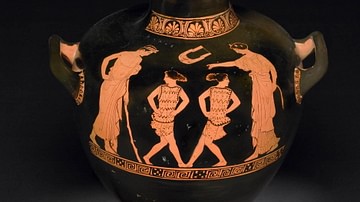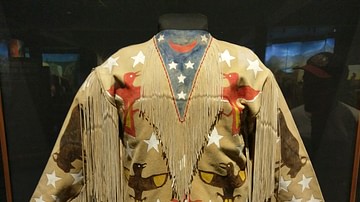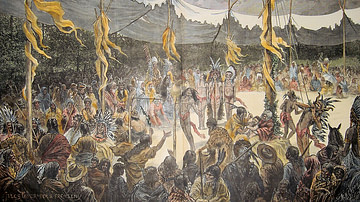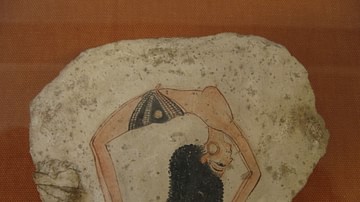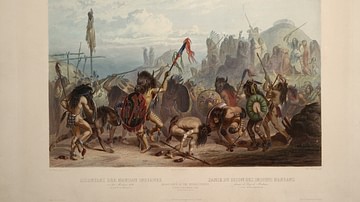Video
The Zeibekiko dance holds an important place in various local communities, where the 'glentistades', and the 'kouvardades' meraklides singers and local dancers still rescue and promote - through the rich folk tradition of their place. Ιt constitutes a separate chapter of Greek culture as a collective form of expression and original creation that harmoniously combines speech, music and movement. Due to the large area it is found in and the historicity it carries, it does not appear in a single form. We can distinguish in its evolutionary path different species, each of which has special characteristics and distinctive and kinetic identity, such as e.g. Kamilieriko, Aptaliko, Aivaliotiko, nicknames with the others are better known both to musicians and dancers.
The relationship of the zeibekiko with song and instrumental music is particularly important as song and melody determine the kinetic act of the dance. Of course, there are cases where the dance is accompanied only by instrumental music, so its characterization does not arise based on its genre, but either based on the place of origin of the melody, such as e.g. Aivaliotiko, Pygiano, Phokiano, Adramyttino or the manner of its execution and the temporal treatment, such as e.g. 'heavy', 'sharp', 'flying', 'fast', 'slow'.
In the songs of Markos Vamvakaris, the traditional relationship of verse - music - dance was kept inseparable. It is known that before recording any of his new songs, he would "try it out" at the feet of a friend of his, Gariza of the flower, an excellent dancer, who "danced zeibekiko on the glass": "...Get up and dance a new one of mine - he said - I want you to see how it goes on your feet...".
The way of learning zeibekiko dance is oral tradition through memory, imitation and repetition within the community, which acts as a privileged field of initiation for each younger generation. The memorization through the daily meeting of the younger with the older instrumentalists, singers and dancers in the primary places of its performance, without a specific time of apprenticeship retains the greatest weight of its transmission.
It is a constantly evolving experiential learning that brings the learner - especially the younger ones - into direct contact with the learning object. Through observation and testing, the younger generations are introduced to the specific type of dance, which they perceive as a form of communication.
The most common movement of the zeibekiko is that of walking, the basic movement that is accessible to anyone. The simplicity of the movements, which immediately become the property of even non-dancers, allows us to grasp them easily, without excessive effort and thought, and then to let them follow the rhythm of repetition, which will modify them, "purify" them ”, will give them their full scope, as well as the meaning they have assumed for the one who embodies them.
Thanks to the easy execution of the structures used (pulse of the walk, symmetry of the movements and their repetition), everyone discovers that he knew how to dance but did not know that he knew it. , an important work in itself, through the play of primitive structures, which affect it with symbolic effectiveness and in an indirect, "magical" way.
The dancer's hands play an important role along with the movement of the body, in what he wants to express.
While dancing, he gives the impression that sometimes he wants to hit, sometimes to avoid a hit, sometimes to take a lead, sometimes he jumps or hits the floor with his hand, and all this in a fantastic interaction of music and movement. The ups and downs of the body, the beating or whirling, even the sudden cessation of movement, combined with raised arms and fingers rattling to the beat work on a metaphorical and symbolic level. Since there is no standardized pacing, the figures take on a prominent semiotic position and alternate.
The space - which does not exceed a few square meters - is also perceived as the personal narrative space of the dancer, who with his individual performance produces his identity. It is a solo improvisational dance, where improvisation itself includes the concept of originality and perpetual (re)creation.
So, the zeibekikos is of ancient origin and ubiquitous in the Asia Minor and later in the rebetiko and folk music and dance repertoire, it is directly connected to the folk traditions of the urban centers, as before being transferred to them it pre-existed as a popular traditional dance, part of the dance tradition of local societies in Asia Minor in Greece and Cyprus.
From a dance of the Zeibekiko minority group and the local societies of Asia Minor, it becomes one of the main expressions of the urban dance tradition of the urban centers as well as the urban centers and major ports of Greece. From an antichrist dance of two people who carried weapons, of four or more people in the dance arrangement of the circle, as it is found to this day in the dance tradition of local communities, it is transformed and prevails in the urban centers as a solitary improvisational dance, initially marginalized.
After the war, it was shaped as a rhythmic and dance expression in the various types of urban folk music, reaching to this day to be accepted by all social classes on which rhythm is emphasized a large part of popular/communal and modern urban music. At the same time, it will never be cut off from its original place (local communities of the region) where it continues to this day to be experienced as a living tradition and spontaneous music and dance expression by the inhabitants of many Greek - island or non - regions in the context of local holidays, festivals and family feasts, etc.
Special mention needs to be made of gender participation in zeibekiko dance as it developed from the 1970s onwards. The woman's entry into the labor market also gave her the corresponding position in the public performance of the zeibekiko. The woman claimed her participation on equal terms with the man in the individual performance of the dance, resulting in her limited participation in the zeibeki, which is also found in the traditional society of the Zeibekiko (Korovinis, 2005) and in the rebetiko (Tyrovolas, 2009-2010). in the context of the Athenian coffeehouses of the last decades of the 19th century (Hatzipantazis, 1986), to become a common practice, overturning stereotypes about gender and gender roles and demystifying the prevailing - for many decades - view that zeibekikos is a 'purely male dance'. Women, dynamic and unrestrained dancing zeibekiko, abolish any prejudice or standardized social discrimination and present with their own dance 'language' issues of identity and freedom, honoring the origin and history of the dance.
Thomas D. Kolovos
President of the Hellenic Zeibekiko Center.
Member of the Hellenic Folklore Society.
Cite This Work
APA Style
Kolovos, T. (2022, November 08). Zeibekikos - Ayla Heritage of Greece. World History Encyclopedia. Retrieved from https://www.worldhistory.org/video/2859/zeibekikos----ayla-heritage-of-greece/
Chicago Style
Kolovos, Thomas. "Zeibekikos - Ayla Heritage of Greece." World History Encyclopedia. Last modified November 08, 2022. https://www.worldhistory.org/video/2859/zeibekikos----ayla-heritage-of-greece/.
MLA Style
Kolovos, Thomas. "Zeibekikos - Ayla Heritage of Greece." World History Encyclopedia. World History Encyclopedia, 08 Nov 2022, https://www.worldhistory.org/video/2859/zeibekikos----ayla-heritage-of-greece/. Web. 26 Apr 2025.

